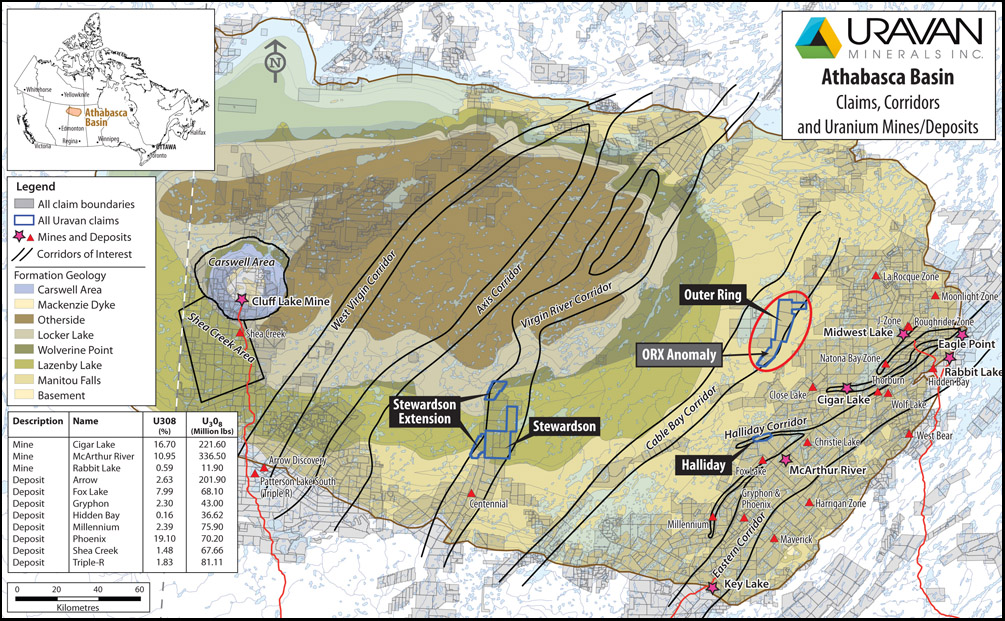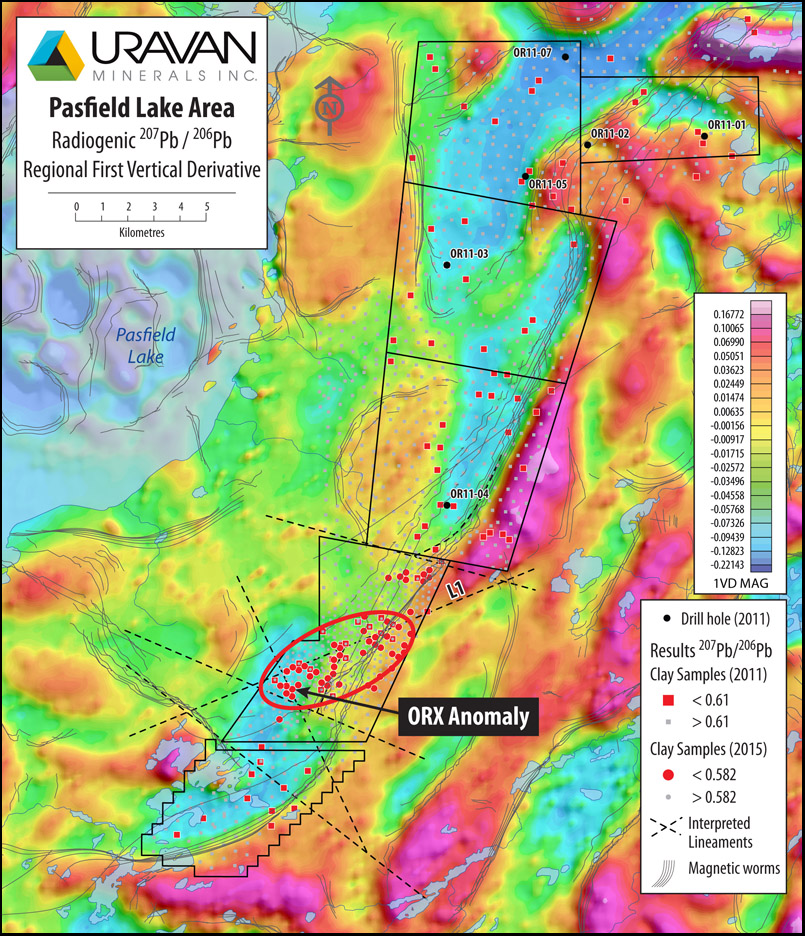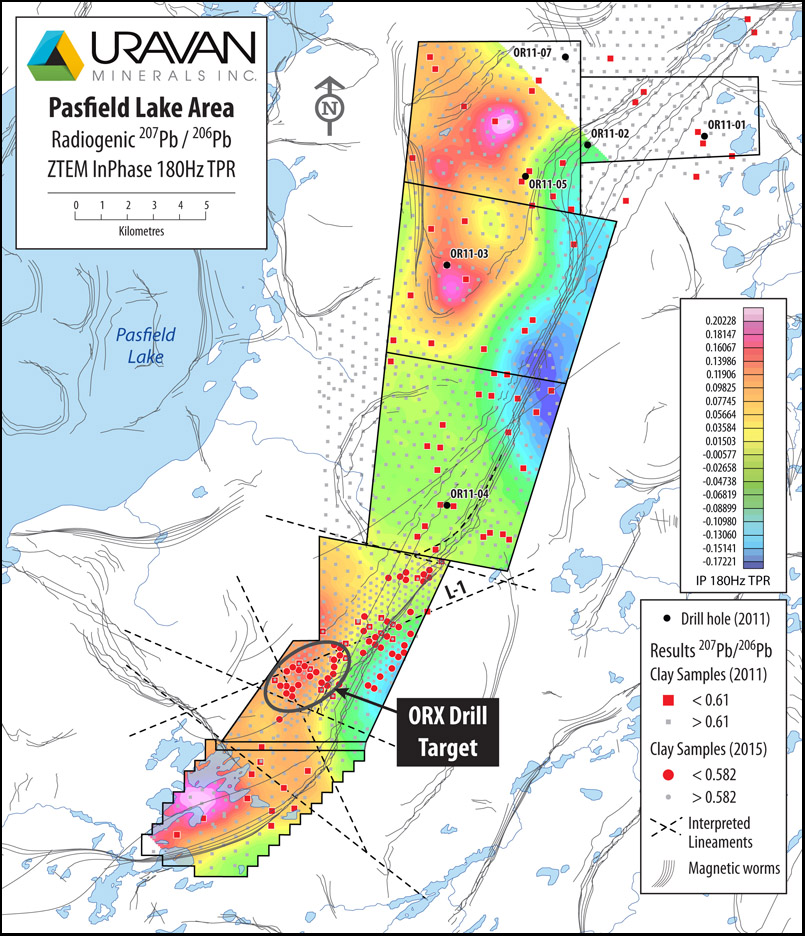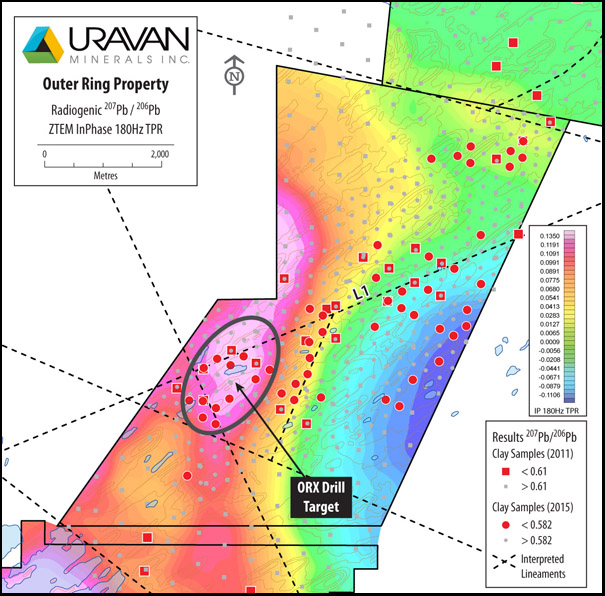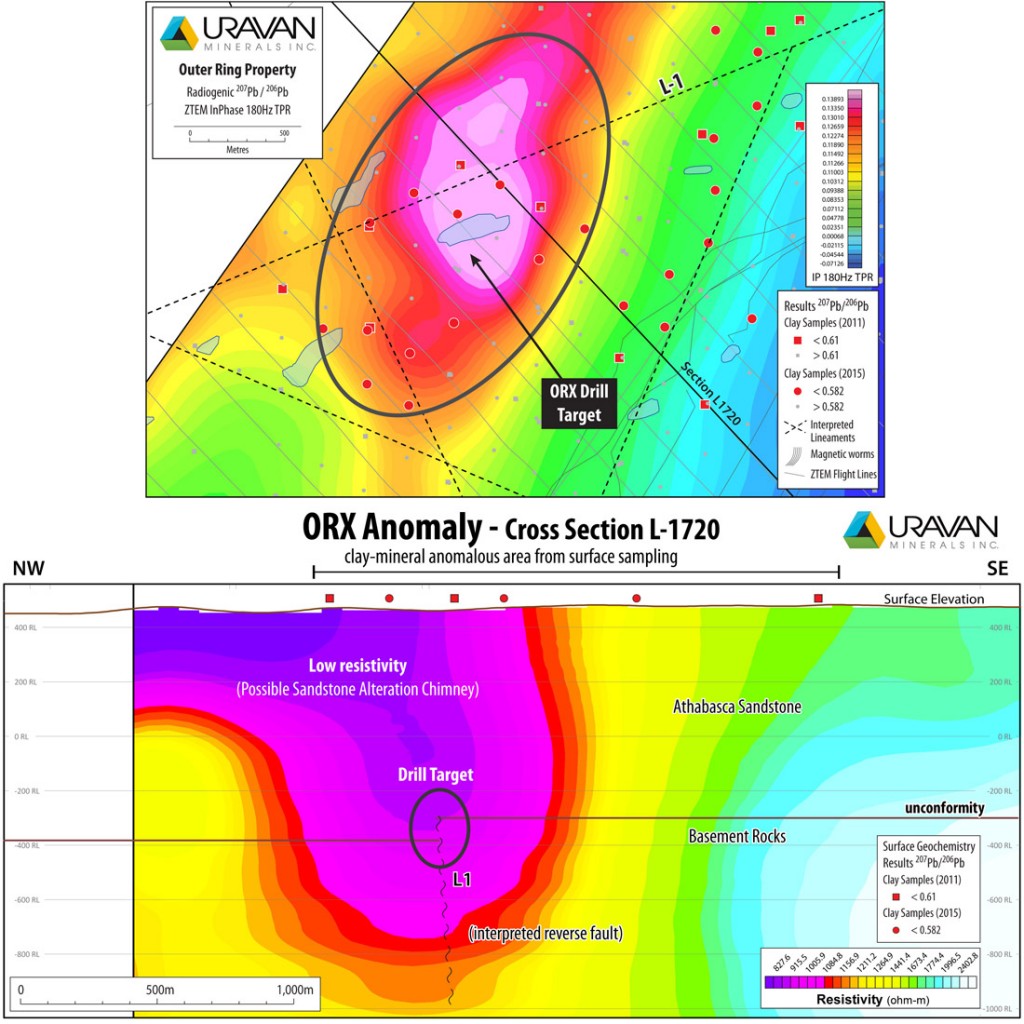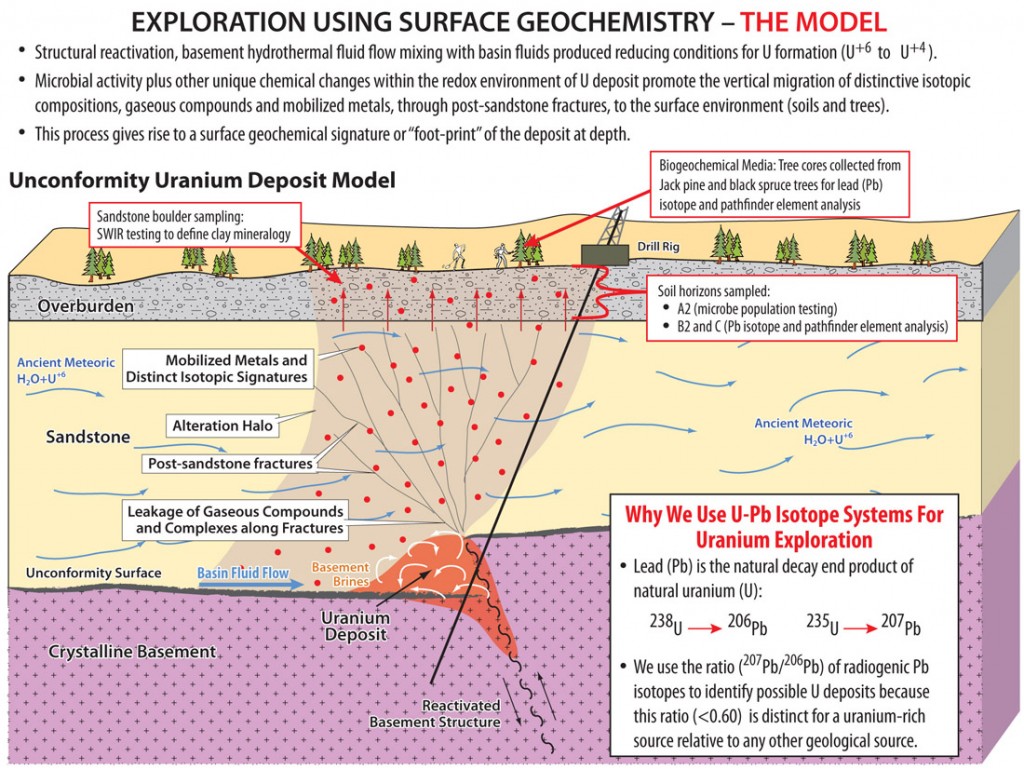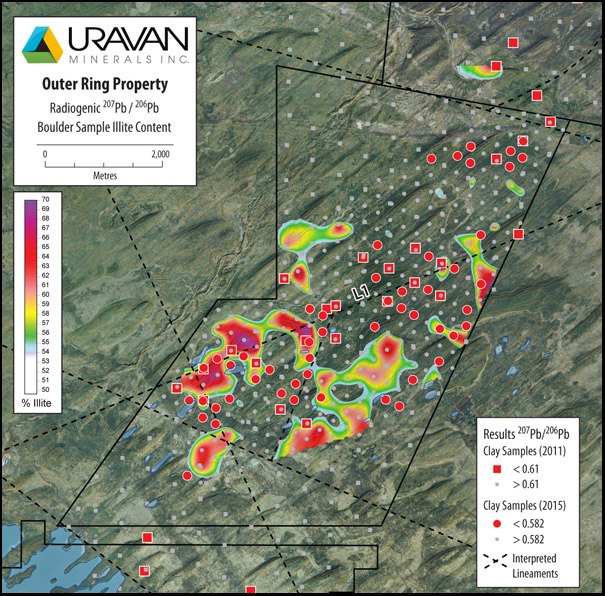Specific drill-hole targeting is focused on the ORX Anomaly (map link),
an area measuring approximately 2 sq. Km having the highest positive correlation with the ORX (ZTEM) conductive system (map link).
The ORX Anomaly is a discrete southwest-trending corridor of anomalous concentrations of radiogenic 207Pb/206Pb ratios2 (<0.61) occurring in the clay-size fraction from soils. From our experience, such well-defined radiogenic surface anomalies define highly prospective areas and, if supported by conductive electromagnetic (EM) signatures, provide compelling and focused drill targets (map link).
Coincident with the ORX Anomaly, the two-dimensional (2D) inversion modeling of the ZTEM survey data highlights a well-developed conductive system extending from the unconformity into the underlying basement lithologies, and vertically into the overlying Athabasca Sandstone to the surface (map link).
This extensive low-resistivity feature in the Sandstone is interpreted to be an illite (clay mineral) alteration signature. Such alteration is typically derived from hydrothermal activity, related to reactivated basement faults, in concurrence with unconformity uranium deposit formation (model link).
The ORX conductive system trends roughly north-south and appears to have been disrupted by a number of major structures, the most prominent is lineament L-1, interpreted as a northeast-southwest reverse fault, dipping steeply southeast. This major structural feature seems to constrain both the southwest-trending ORX surface geochemical signature and the prominent low-resistivity alteration feature in the Sandstone (map link).
The ORX drill program is scheduled to commence in early September 2016.
Larry Lahusen, CEO for Uravan, states,
“The ORX Anomaly is a significant well-defined surface geochemical signature that correlates positively with our recently completed EM geophysical survey. The combination of coincident geochemical and geophysical signatures provides focused drill targets as opposed to drilling blind geophysical trends. The ORX Anomaly has been identified as an anomalous surface geochemical cluster supported by structure and an EM geophysical trend that can now be evaluated cost-effectively, thereby reducing the number of drill-holes to discovery”.
Dr. Colin Dunn, P. Geo., technical advisor for Uravan, is the Qualified Person for the purposes of NI 43-101 with respect to the technical information in this press release. Dr. Colin Dunn, an independent specialist in biogeochemistry, is working closely with Uravan’s technical group to advance the evaluation and interpretation of surface geochemical data.
1 The airborne natural source Z-Axis Tipper Electromagnetic (ZTEM) system provides high resolution EM data at depths >1500m and excellent resistivity discrimination for detection of conductive basement anomalies and low-resistivity signatures in the overlying sandstone.
2 Natural uranium is primarily composed of two isotopes: 235 U = 0.72%, the fissile fraction, and238U = 99.284%, s the non-fissile fraction. Lead (Pb) isotopes 207Pb and 206Pb are the radioactive (radiogenic) decay products of natural uranium: 235 U decays to 207Pb and 238U decays to 206Pb. The presence of low 207Pb/206Pb isotopic ratios (<0.60) is used to identify possible U deposits because this ratio is unique and distinctively low for Pb coming from a U deposit relative to any other geological source.
3 The Athabasca Basin is an ancient (Paleoproterozoic) sandstone basin located in northernSaskatchewan, Canada. The Athabasca Group sandstone and the underlying crystalline basement rocks host high-grade uranium deposits, either at the sandstone-basement unconformity (sandstone-hosted mineralization) or within the underlying structurally disrupted crystalline basement lithologies (basement-hosted mineralization). These unconformity-related uranium deposits account for about 20 percent of the world’s natural uranium production. The ore grades are high, typically grading 2% to 20% U308.
Read the press release here.
Uravan Outer Ring Project
Uravan announces closing of second tranche of private placement 18 May 2016
Uravan Outer Ring project: ZTEM™ survey in Athabasca Basin 29 April 2016
Geotech Ltd.’s work on the Stewardson Project in the Athabasca Basin
